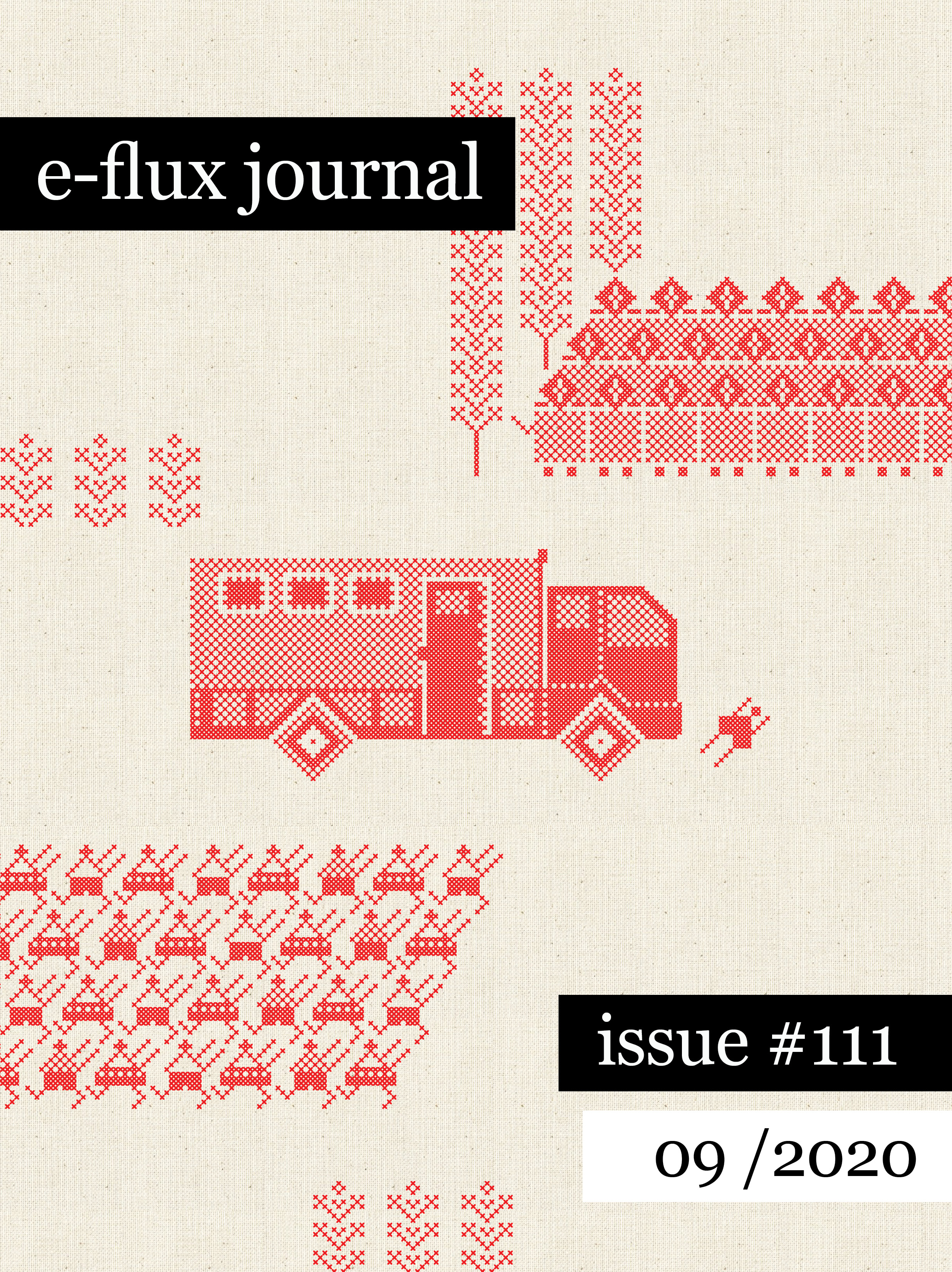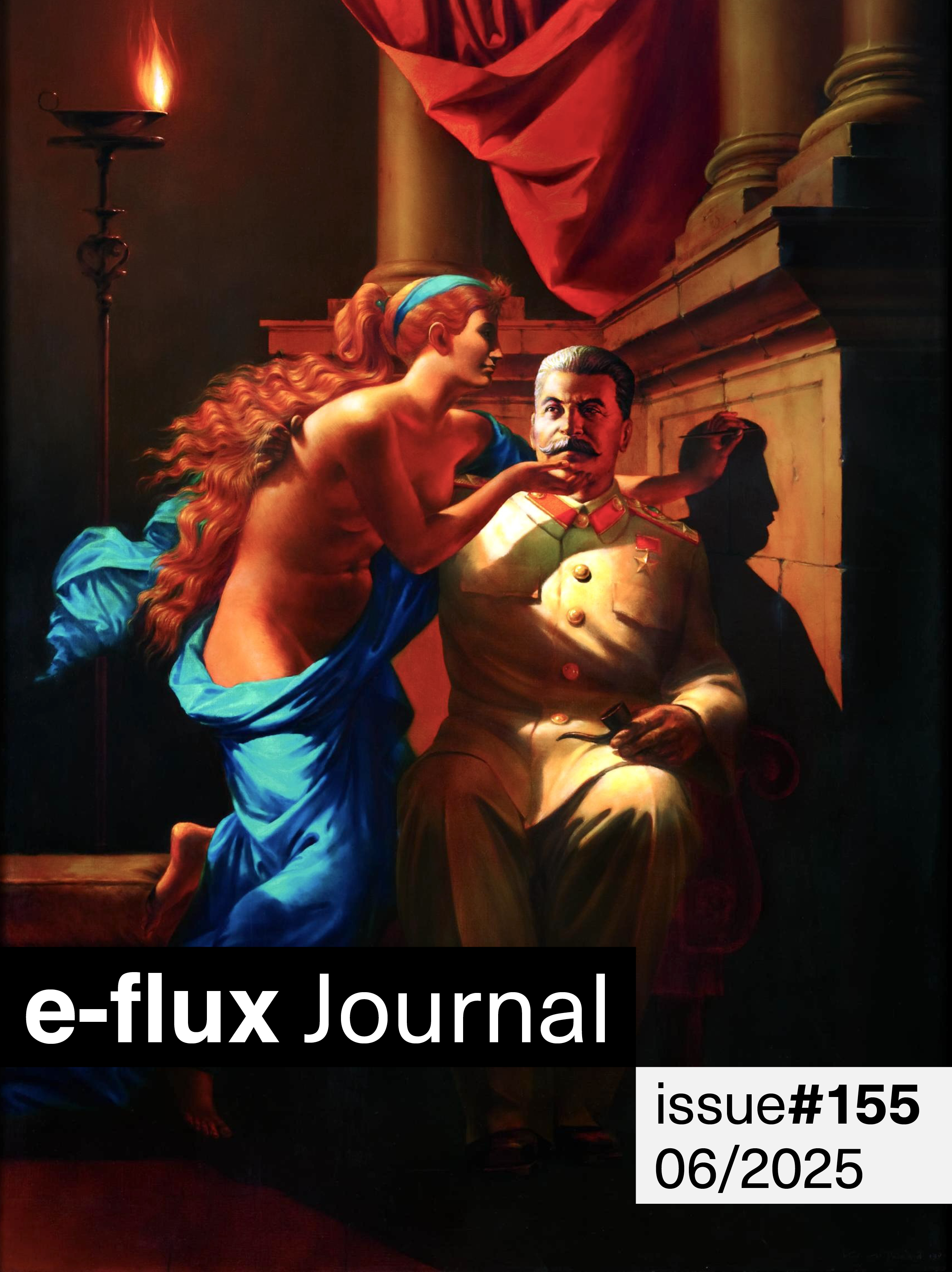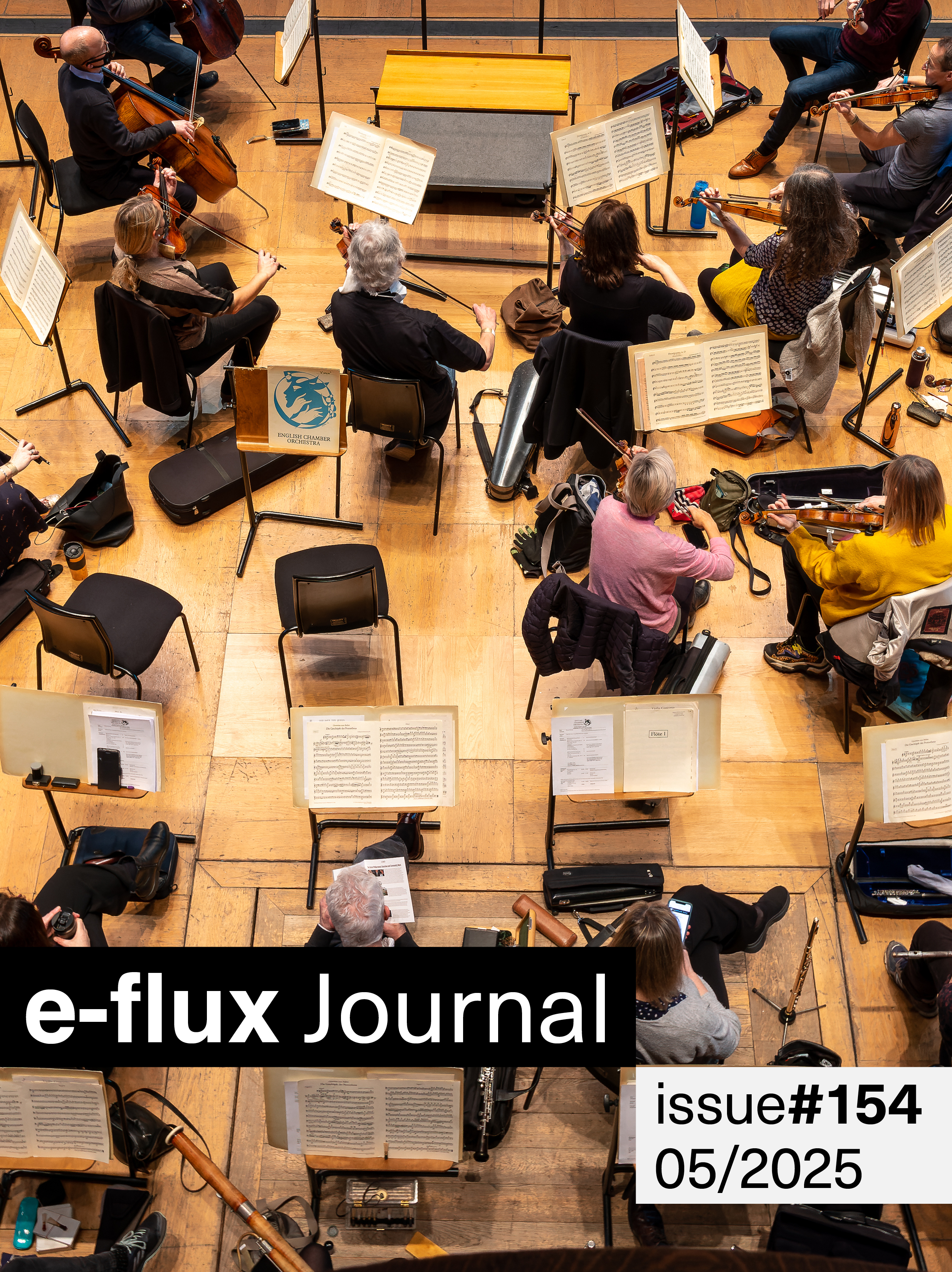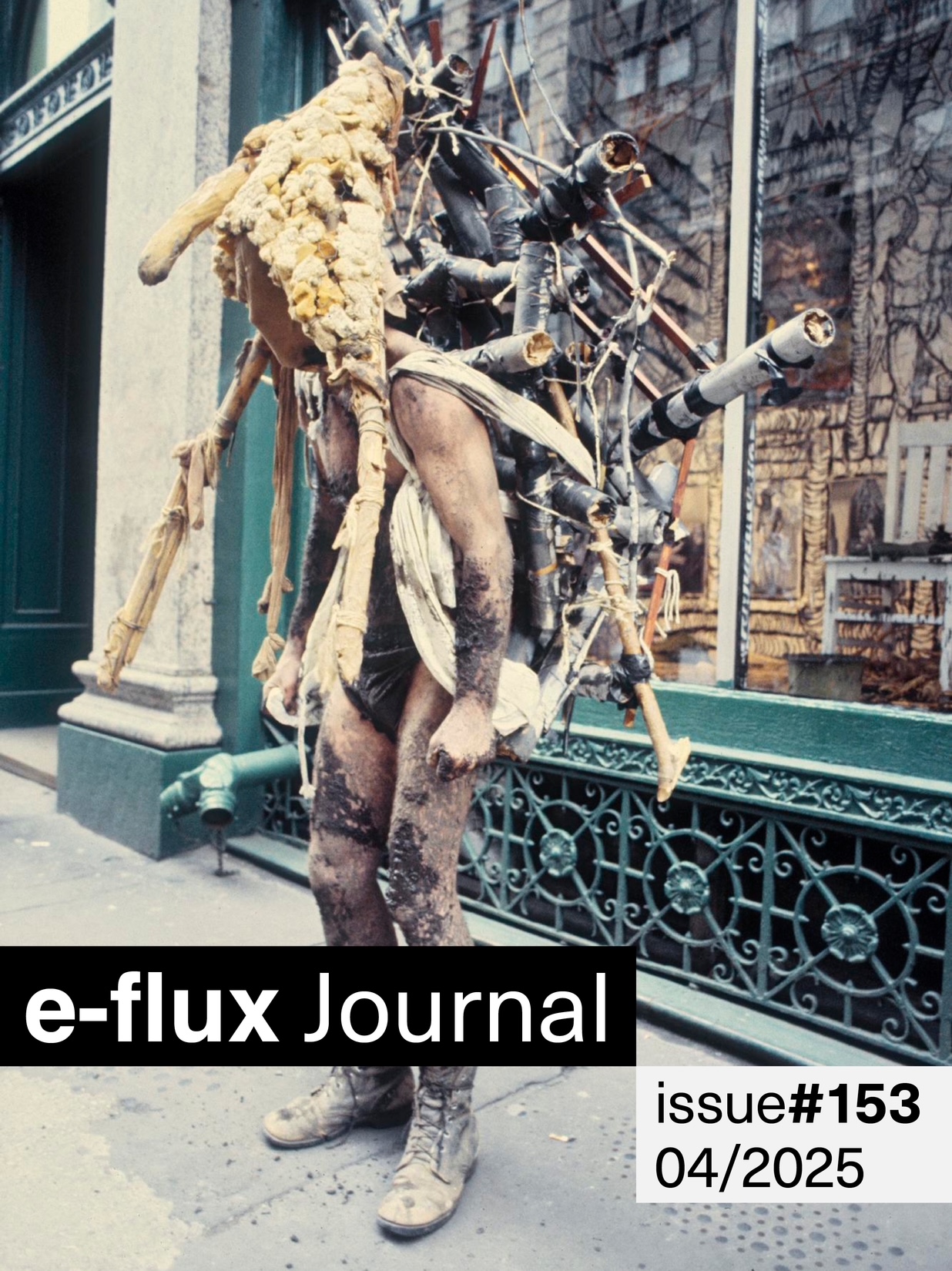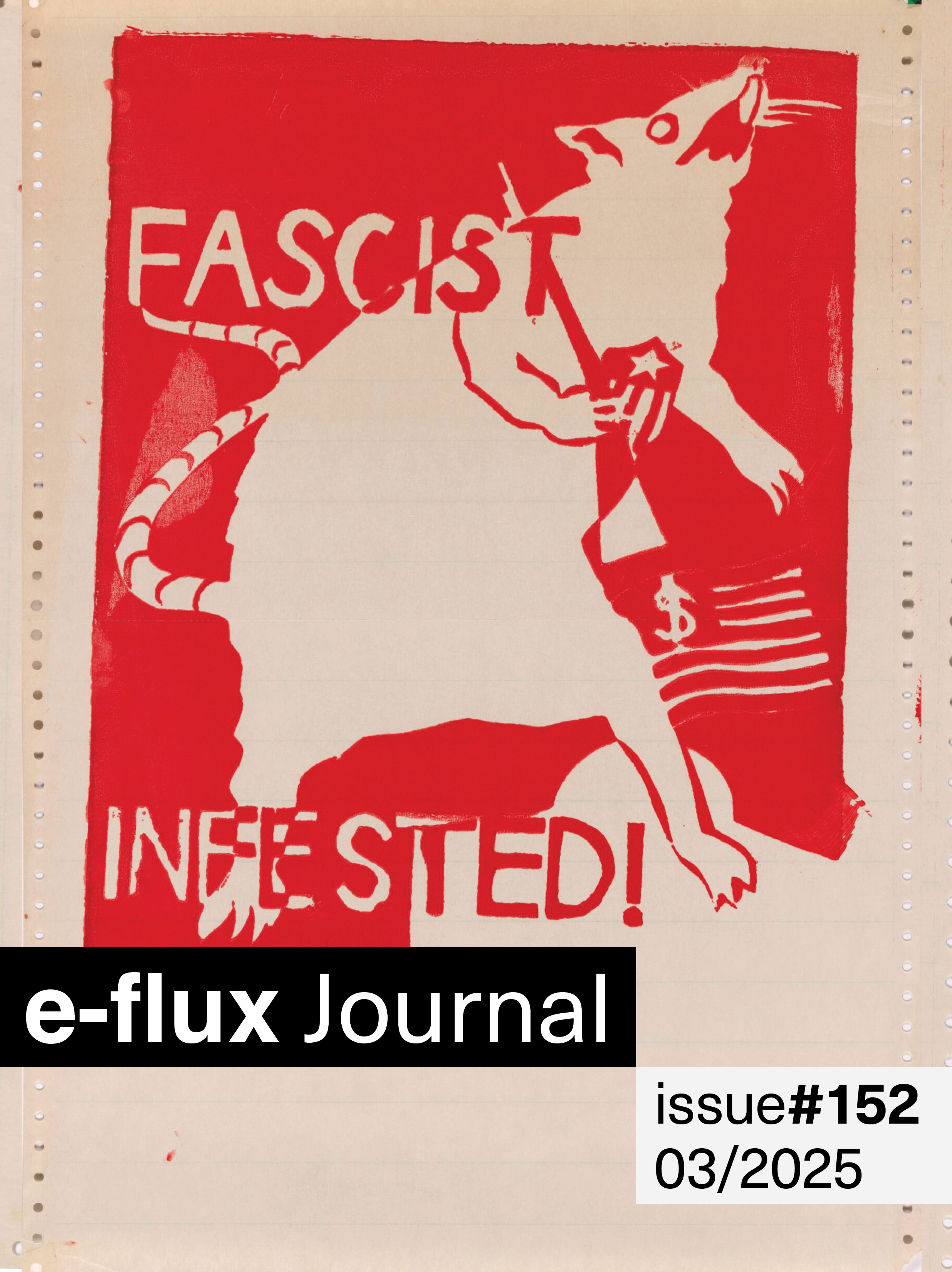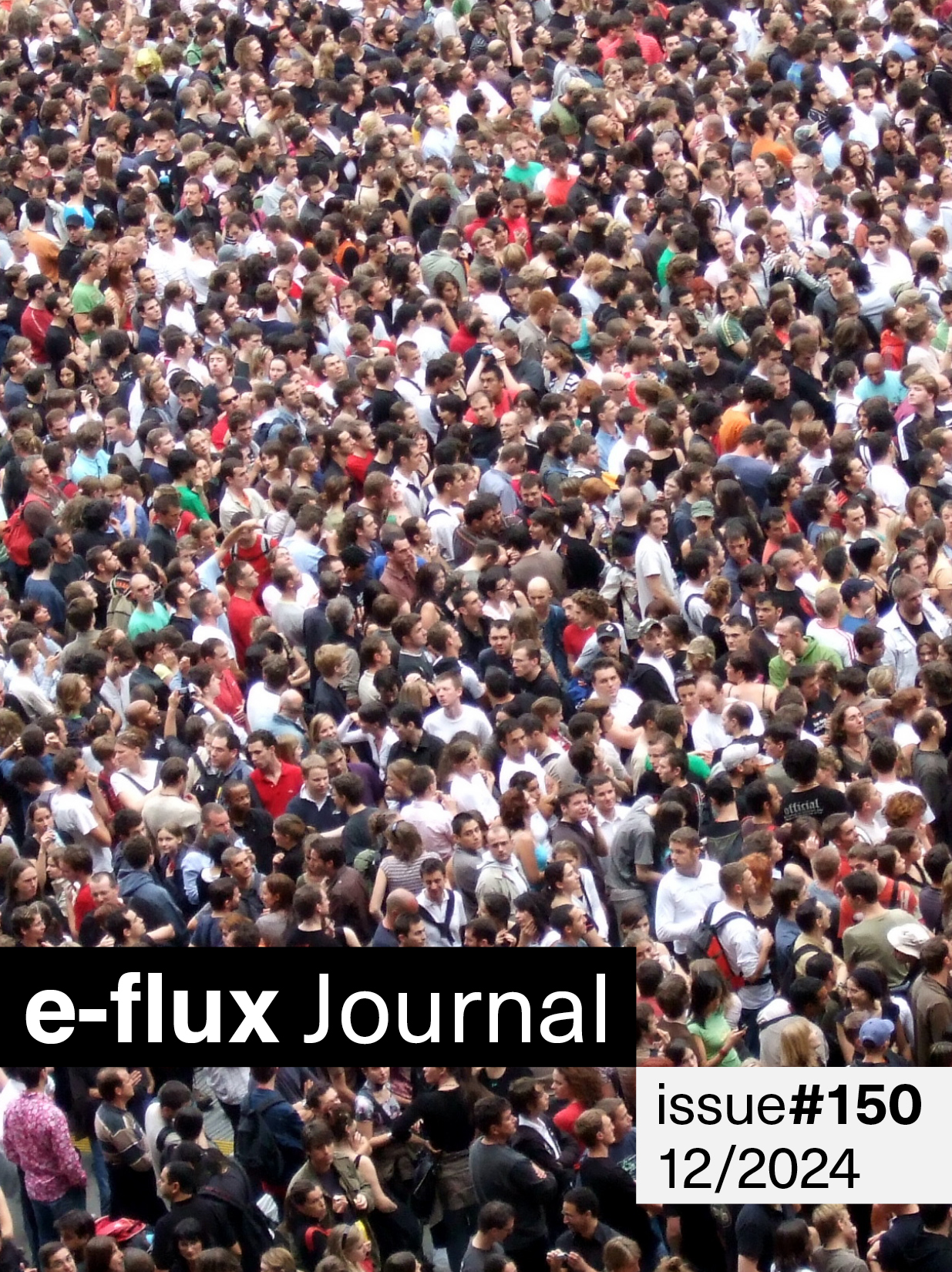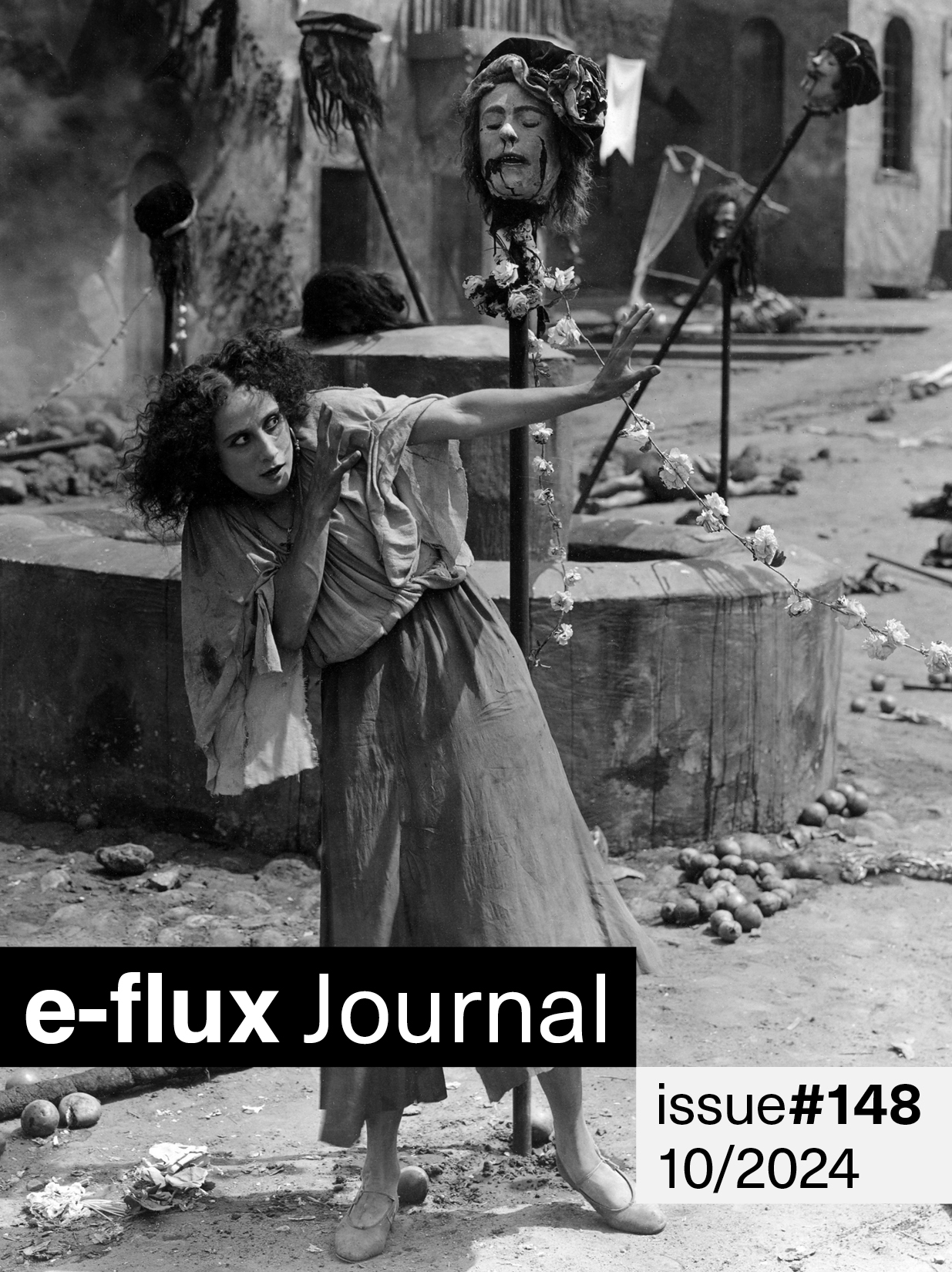e-flux journal issue 111
with Nicholas Mirzoeff, Lara Khaldi, Yazan Khalili, Marwa Arsanios, Franco “Bifo” Berardi, Sophie Lewis, Serubiri Moses, Iman Issa, Ben Ware, Terry Smith, and Boris Groys
Dear friends,
As we put the finishing touches on this issue last week, we heard the terrible news that our colleague and comrade David Graeber passed away. You and we are among so many changed by David’s work and acts of solidarity. His fierce commitment to a just world will be sorely missed at a time when it is especially needed. Along with Nika Dubrovsky, his wife, David wrote “Another Art World” (parts 1 and 2) in these pages. In the close future, we will publish part 3. Over the weekend, Nicholas Mirzoeff wrote a tribute to his friend and fellow traveler for this issue. We anticipate that further remembrances will be forthcoming. May his memory be a call for a radically better future; may he rest in power.
We dedicate this September issue to David Graeber, as well as another e-flux journal author taken far too young. Robert Bird, scholar of aesthetic practice and theorist of Russian/Soviet modernism, died on Labor Day. His essays on how to keep communism aloft in Soviet cinema and articulations of Soviet realism should have been only the beginning of a longer series.
***
Who remembers the title of last year’s Venice Biennale? One long year and change later, it seems that nobody’s worst enemy could have made a threat, a promise, or a curse that we may live in times quite as … “interesting” as the ones we find ourselves in now. Arguably, anyone paying even the most distant attention to 2019—or to history and the evolving present in general—could have foreseen what we were heading towards. It’s hard to imagine, though, that someone could have envisioned just how deadly fascinating these times would turn out to be.
In any case, here we are. A new semester begins in old virtual digs; renewed vigor bubbles up behind decades- or centuries-long movements and ancient oppressions. Perhaps, through the summer, a glimpse emerged of something like hope for new regimes, new leadership, or better yet, new solidarities, despite the stubborn persistence of failed (or rather, too-efficient) structures and institutions across the globe. It promises to be a wild ride ahead; perchance we’ll eventually enter into less interesting times.
From Jerusalem, Berlin, and Beirut, Lara Khaldi, Yazan Khalili, and Marwa Arsanios discuss the post-1990s turn that saw politically active cultural organizations in Lebanon and Palestine become neoliberal fundraising bodies promoting competitive, individualistic visions of contemporary art. Franco “Bifo” Berardi takes us to the thrumming edge of the American abyss, shattering any rose-tinted lenses that remain with words coming directly from that exceptional pit. Serubiri Moses, charting Édouard Glissant’s use of language, traces a fecund and generative landscape of self-expression in exodus. Iman Issa courses the complex evolution of the state of monuments in Egypt over recent years. Sophie Lewis, nine months after her mother’s death, finds a needed, if only digital, being-with grief in today’s physically distant reality.
Ben Ware confronts the many real threats of the end and of extinction that define our shared present. In a text written in the 1980s that reads just as pertinently today, Boris Groys examines the metamorphoses of engagement, and artistic autonomy, through a study of Trotsky. From Australia, Terry Smith attends to the deep art-historical and contemporary importance of the Yirrkala Church Panels, large-scale paintings by the Yolŋu people that will tour the world when traveling exhibitions and museums are open to visitors once again.
—Editors
Nicholas Mirzoeff—For David, With Love
The untimely dead leave behind them a gift, one that the living may not want. That gift is the perception of the shape of the space that we have imposed on the departed, above and beyond the space that they actively chose for themselves. Did we not ask too much of David Graeber? Perhaps so, and there will be time to consider and mourn. Before that time comes, each of us that found energy in all that David did and thought, from his direct actions to his exposure of debt and the identification of bullshit jobs, will have to look at that space and decide, individually and collectively, how it is to be filled.
Lara Khaldi, Yazan Khalili, and Marwa Arsanios—What We Talk about When We Talk about Crisis: A Conversation, Part 1
Contemporary art is not the production of the institution, but is rather the institution itself. The relationship between the structure of production and the product is very entangled. They both function on the same economic basis: proposal writing. It is a framework of thinking and an act of language that is always happening in the future tense: “The project aims to …,” “The work will …,” etc. Writing the proposal becomes part of the artwork itself. The person who knows how to explain the proposed piece, mainly in English, will be more likely to get grants. This process relies on the artist’s embeddedness in spaces that hold cultural capital, and not only on the artist’s or the work’s merit. The claim of equality in open calls for funded projects is contested.
Franco “Bifo” Berardi—The American Abyss
Thanks to his ignorance and moral abjection, Donald Trump represents the true soul of America, the unmovable soul of a population formed by a never-ending sequence of exploitation, oppression, bullying, invasions, and abominable crimes. Nothing but this. There isn’t an alternative America, as many thought in the 1960s and ’70s. There are millions of women and men, mostly nonwhite, who have suffered from American violence, and especially at a certain point in the ’60s and ’70s, fought to reform America to become more human. They failed, because there is no way to reform a nation of bigots and killers.
Sophie Lewis—With-Women: Grieving in Capitalist Time
You or I, in other words, singly or as a collective, might at some point or another be called to doula the inaugural emergence, or terminal shutdown, of someone’s body. You never know when an extra hand might be required on the occasion of someone’s expulsion of a fetus (dead or living) from their uterus. You never know when your simple watchful presence might be called for because someone is dying and because, without you there, they would be utterly alone. As Madeline Lane-McKinley says, “if we must mother our friends, let us all be mothered.”
Serubiri Moses—A Useful Landscape
Colonial history is a history of property accounted for in world-scale financial systems and imperialism. Creolization strikes against imperialism via the internal protocols of the Creole community and via counter-ordering the French language. Thus, if a diasporic community is not legitimized through colonial property, what alternatives foster legitimacy? In Glissant’s Poetics of Relation, legitimacy is understood through filiation. While this term signals blood lineages and ancestry, Glissant is careful to precisely name filiation as the basis for colonial history.
Iman Issa—Proxies, with a Life of their Own
The mocking of official structures and roles is surely not new, but the subject position from which it emerges is. For many years, it has been the traditional role of satirists, artists, dissidents, and cultural and social commentators to undertake such comic caricatures, with the aim of shaking belief in and the stability of historically significant figures, narratives, and gestures, but rarely, in recent memory, have such caricatures been performed from the subject position of the very institutions they were meant to deconstruct. For now the monument and its parody, the president and the comedian making fun of what a president is, are one and the same. So what happens when the parody is not performed from the margins attacking the center, but is identical with the original, or more precisely is the original?
Ben Ware—Nothing But the End to Come? Extinction Fragments
It is now accepted that we are moving towards a new phase of world war: war by algorithm; and specifically the development of Lethal Autonomous Weapons Systems (LAWS)—systems that are, essentially, outside human control. In November 2019, US Defense Department Joint AI Center director Lieutenant General Jack Shanahan (in conversation with Google CEO Eric Schmidt) spoke frankly about a future of algorithmic warfare: “We are going to be shocked by the speed, the chaos, the bloodiness, and the friction of a future fight in which it will be playing out, maybe in microseconds at times. How do we envision that fight happening? It has to be algorithm against algorithm.” If the very idea of humanity rests, at least in part, on an ability to imagine the other’s suffering, then what is being signposted here is a movement towards humanity’s final negation.
Terry Smith—Marking Places, Cross-Hatching Worlds: The Yirrkala Panels
In the later months of 1962 and the early months of 1963, elders of Yolŋu clans from the area known by the balanda (“white people”) as the Gove Peninsula in North East Arnhem Land came together to paint what became known as the Yirrkala Church Panels. Today, the panels and the stories that they show are revered more than ever. As a collective statement, they continue to resonate on multiple levels, from the local community outwards through several registers to, I suggest, a worldly scale. The entirely collective process through which they were produced models a collaborative form of indigenous and non-indigenous participation in the processes of reparation and reconciliation so essential to Australia’s national polity. Historical accuracy, moral accountability, restorative justice, and social unity were at stake, as they remain.
Boris Groys—Trotsky, or Metamorphoses of Engagement
The discussion about politically engaged art tore the art world apart in the twentieth century, and still does today. The advocates of absolute artistic autonomy react to engaged artists in a quite confrontational mode, and vice versa. However, the idea of the autonomy of art is deeply connected to the project of artistic engagement. It is not particularly difficult to show that the radical autonomy of art can only be manifested through radical political engagement. And only the artist who is completely free and autonomous can become engaged.
